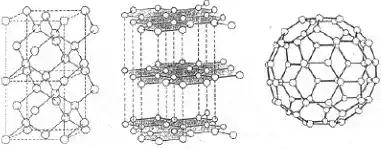افشین رشید
اُستادیار ؛ عضو هیات علمی دانشگاه آزاد اسلامی واحد علوم و تحقیقات تهران
600 یادداشت منتشر شدهThe Name Fullerenes Comes From The Geodesic Domes that The Molecules of These Nanoparticles Resemble.

Note: The name fullerenes comes from the geodesic domes that the molecules of these nanoparticles resemble. Using laser evaporation of graphite and structural changes in the Cn clusters of carbon in carbon nanotubes, the most common of which are C60 and C70.
The C70 carbon filler molecule can undergo a wide range of novel chemical reactions. They are the third allotropic form of carbon (after graphite and diamond). Fullerenes consisting of fewer than 300 carbon atoms (endohedral fullerenes) are commonly known as "buckyballs".

A fullerene molecule is composed of 70 carbon atoms. C70 Fullerenes are closed hollow cages made of carbon atoms interconnected in pentagonal and hexagonal rings with a cage-like fused ring structure that resembles a rugby ball. Each carbon atom on the surface of the cage is bonded to three neighboring carbon atoms, and its sp2 bonds are combined with one carbon atom at the vertices of each polygon and one bond along each polygon edge. Fullerene molecules can undergo a wide range of novel chemical reactions. They readily accept and donate electrons.

C70 carbon nanotubes act as strong oxidizing insulators for low-energy organic layers. The C70 buckyball gets its name from its size, as its diameter is in the nanometer range (about 50,000 times smaller than the width of a human hair) while its length can reach several millimeters. Their long length of several microns and small diameter of several nanometers result in a very large length-to-diameter ratio. Therefore, they can be roughly considered as one-dimensional fluorescence.

Thus, C70 buckyballs exhibit interesting electronic, mechanical, and molecular properties. The characteristic of carbon nanotubes is the effect of their approximately one-dimensional structure on their molecular and electronic properties. Nanotubes come in two main categories: single-walled nanotubes and multi-walled nanotubes (MWNTs). Single-walled nanotubes can be thought of as long sheets of graphite rolled up into a cylinder. The aspect ratio of nanotubes is about 1000, and they can be thought of as approximately one-dimensional structures. Nanotubes are completely formed, similar to graphite,
Conclusion :
The name fullerenes comes from the geodesic domes that the molecules of these nanoparticles resemble. They are produced by laser vaporization of graphite and structural changes in the Cn carbon clusters into carbon nanotubes, the most common of which are C60 and C70.